Scope Communications UK USAECOLINK UHF Paging System User Manual XLITEUSAECO
Scope Communications UK Ltd UHF Paging System XLITEUSAECO
Contents
Manual 6 of 6
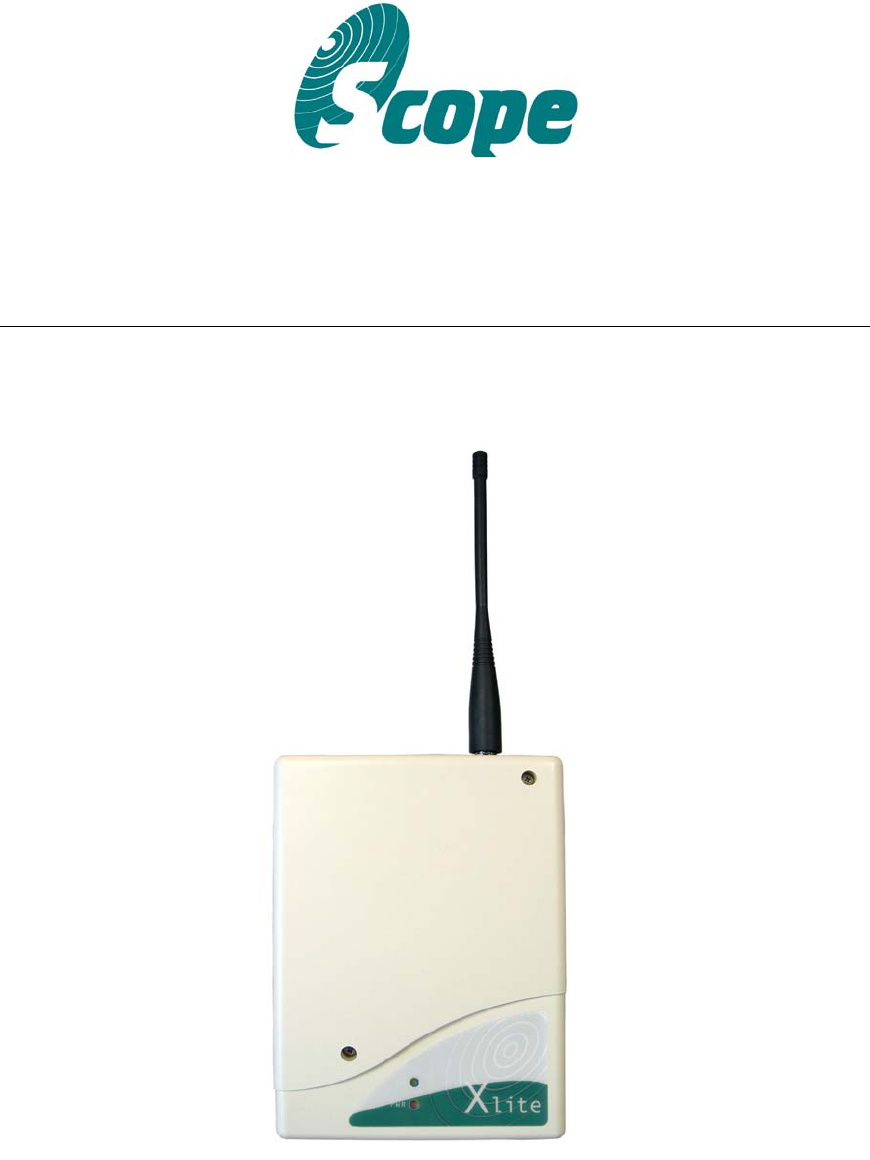
XLITEECO Issue 1
X-Lite Transmitter
USA Eco Version
User Manual

Scope Xlite USA Version
XLITEUSAECO Issue 1
1
PREFACE
Important Installation Information
It is the purchasers’ responsibility to determine the suitability of this equipment and its derivatives for any
given application, Scope cannot give specific advice in this manual, as each use will require independent
evaluation.
Scope has, wherever possible, employed extra safeguards or designed optional equipment to further
monitor the system’s performance. Certain system installations, operational requirements or budgets
may, however, limit the effectiveness of these safeguards. Again, the suitability of the system for any
given application must therefore be decided by the installer and their customer, relative to the application
and risk.
Licence
This equipment is cleared for use within the USA under a license assigned to the exclusive importer,
PIPS Holdings Inc. License No. 950415906. Certain restrictions apply in respect of power output and
antenna installations.
Alternative frequencies are available by formal license application (Form 600) via the FCC. These will not
be subject to the same restrictions as the standard assigned license. You should obtain the FCC Rules
and Regulations, Title 47, Part 80 to End, including Parts 90 and 95, available from the US Gov. Printing
Office, GPO Bookstore, FCC Office or www.fcc.gov/oet/info/rules/
Important Safety Information
Scope products are designed to operate safely when installed and used according to general safety
practices. The following requirements should be observed at all times.
Do NOT subject this equipment to:
Mechanical shock
Excessive humidity or moisture
Extremes of temperature
Corrosive liquids
This equipment is designed for indoor use, unless expressly stated otherwise, and must not be used in
classified Hazardous Areas, including areas containing explosive or flammable vapors, unless express
authorization has been given in writing by the manufacturer. If in doubt, consult your local product dealer
for further information.
Do not obstruct any slots or openings in the product. These are provided for ventilation to ensure reliable
operation of the product and to protect it from overheating.
Only use a damp cloth for cleaning (not liquid or aerosol based cleaners), and ensure that any power is
removed from the unit prior to beginning the cleaning operation.
Removal of covers from the equipment must only be undertaken by authorized service personnel, who
must ensure that power is isolated prior to removal.

Scope Xlite USA Version
XLITEUSAECO Issue 1
2
PREFACE
Equipment Applications
It is the user’s responsibility to determine the suitability of the Scope products for any given application.
Scope, including its subsidiaries and Distributors, cannot provide specific advice within this manual, as
each application will require independent evaluation. Common sense dictates that certain applications
may require back up systems to cover in the event of mains or equipment failure. All applications should
be thoroughly assessed by the installer in conjunction with the customer so as to minimize risk. Scope
has no control of the use and application of the frequencies issued by the FCC. Some equipment that is
individually licensed may have a greater degree of protection than other equipment that is operated on a
FCC License Assignment basis. The following information, however, may be of benefit.
Equipment Testing
Range tests should be carried out at least once a week on portable radio equipment, more often when
critical criteria apply. This should involve testing the unit past the limit of its required working range. Good
working practice dictates that a suitable system installation log, covering both portable and fixed
equipment must be generated, together with a record of the dates when the system has been manually
checked and/or serviced, (with the aid of suitable test equipment etc.) enabling the system performance
to be compared with the original installation data.
The frequency of the tests required will vary between applications. If portable equipment has been
dropped or is worn by a person involved in an accident, the unit should be tested again before re-use. It
must be stressed that the physical range tests are essential and that any construction work or movement
of plant or equipment could alter the signaling capability of the unit. Radio equipment, like any other
requires servicing from time to time to ensure that it is operating to its optimum performance. It is
therefore essential that equipment is inspected and tested by authorized service centers at least once a
year.
Literature
Scope Communications UK Ltd, the manufacturer, in conjunction with it’s distributors operates a policy of
continual improvement, and therefore reserve the right to modify or change any specifications without
prior notice.
While every possible care has been taken in the preparation of this manual, Scope does not accept any
liability for technical or typographical errors or omissions contained herein, nor for incidental or
consequential damage arising from the use of this material.
Installation
Installation must only be undertaken by an Approved contractor, who shall ensure that all work is carried
out in compliance with the appropriate State and Federal Regulations. For mains powered equipment, a
readily accessible isolating fuse or socket must be located within 1 meter of the equipment.
Liability
Scope does not accept liability for any damage or injury, howsoever caused as the result of misuse of this
equipment. It is the responsibility of the user to ensure that the equipment is operated in the manner for
which it was intended and that it is the correct item of equipment for the required task.
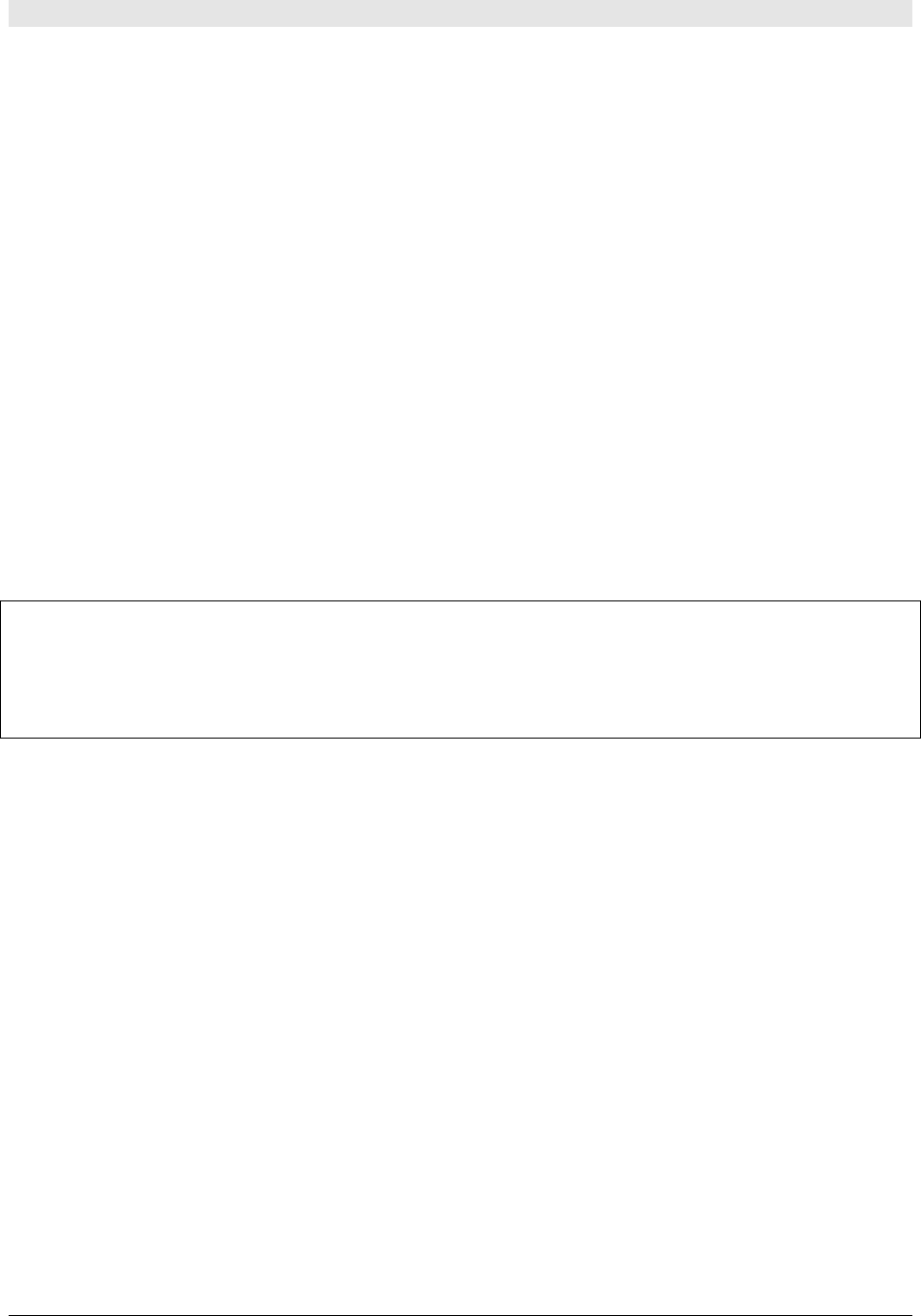
Scope Xlite USA Version
XLITEUSAECO Issue 1
3
PREFACE
Warranty
This product is warranted as free from defects of workmanship and materials for a period of one year from
the original purchase date. During this time, if there is a defect or malfunction of this product, Scope will,
with proof of purchase, repair or replace at its discretion any defective parts, free of charge. This does not
include where the adjustments, parts and repair are necessary due to circumstances beyond the control
of Scope, including but not limited to fire or other casualty, accident, neglect, abuse, abnormal use or
battery leakage damage.
There are no other expressed or implied warranties except as stated herein, and those excluded include
those of merchantability and fitness for a particular purpose. In no event will Scope or any of its agents be
liable for direct, indirect, special incidental or consequential damages resulting from any defect in the
product, even if advised of the possibility of such damages.
The warranties and remedies set forth above are exclusive and in lieu of all others, oral or written,
expressed or implied. No Scope distributor, dealer, agent or employee is authorized to make any
modification, extension or addition to this warranty.
Some states do not allow limitations on how long an implied warranty may last and some states do not
allow exclusions or limitation of incidental or consequential damages.
Warning! No User Serviceable Parts
Alteration or modification to any part of this equipment, without the prior written consent of the
manufacturer, will invalidate all manufacturer approvals and warranties. No adjustments can be
undertaken except by qualified and licensed persons as defined by the FCC Rules and Regulations.
Operation of altered equipment can result in fines, imprisonment, and/or confiscation of such equipment.
© Scope Communications UK Ltd, 2006 All Rights Reserved

Scope Xlite USA Version
XLITEUSAECO Issue 1
4
System Overview
The Scope Xlite is a POCSAG budget entry point data display radio paging system which can be used to
transmit alphanumeric\ text messages direct to pocket pagers carried by individuals or entire groups.
Information is input by way of an RS232 serial port. Up to 9,999 pagers can be supported on any one
system.
Base Equipment type & description: Xlite Single Port Paging Transmitter
Transmitter FCC ID: JRNUSAECOLINK
Transmitting Frequency: 457.550 MHz or 457.575 MHz*
Effective Range: Up to 1 mile with standard aerial
* or as specified on separate configuration sheet
optional external aerials and amplifiers available for greater range
Section 1: Installation
The information contained in this Section is intended for use by authorized system installation
engineers only. Unqualified personnel should not undertake installation of this equipment under
any circumstances whatsoever.
Location of the hardware
Before locating the hardware in any given location, it is important to take into account the range of
operation that you require to obtain from your system. The standard transmitter can quite easily provide
ranges of up to a mile or more and will provide excellent propagation on most industrial sites, covering a
considerable area with just a quarter wave antenna (BNC terminated) connected directly to the unit.
For coverage of very large sites, or where exceptionally difficult operating conditions exist, it may be
advantageous to install an external antenna. Installing the transmitter on the second or third floor of a
building will more often than not boost overall range. However, horizontal range is not always required as
much as propagation through a multi story building. Here it may be more useful to use a small external
antenna mounted outside the building at half the building height. Sometimes range is required more in
one direction than in the other: moving the aerial to one side of the building can provide a bias in the
required direction, which may overcome the range difficulties. (See section: Other Antennas).
Important: coaxial feeds which are longer than 5 meters must employ low loss 50 ohm coax. We normally
do not recommend feeds of more than 15 meters for standard applications. However, we suggest you
contact our technical department where other considerations may prove this to be impractical.
A further consideration that must be taken into account is the distance between the transmitter and the
source of the data feeding the transmitter. If the unit is to deploy a standard RS232 serial interface,
reliable reception of the data should not be attempted in excess of 15 meters of cable. These cables
should be screened/shielded and must be kept clear of sources of induced magnetic or electrical noise. In
the event that distances of over 15 meters are required for the data feed, additional drivers or amplifiers
must be installed at both ends of the data link.

Scope Xlite USA Version
XLITEUSAECO Issue 1
5
Some major points to consider when installing equipment:
1 Never install antennas near or adjacent to telephone, public address or data
communication lines or overhead power cables.
2 Avoid, where ever possible, running antenna coax alongside other cables.
3 Avoid mounting the transmitter in the immediate vicinity of telephone exchanges
or computer equipment.
4 Always use proprietary 50 ohm coaxial cable between the antenna and the
transmitter. If cable runs exceed 5 meters, always use low loss 50 ohm cable
such as RG213, UR67 or equivalent.
Coaxial cable intended for TV, Satellite or CCTV installations is normally 75 OHM
and therefore totally unsuitable for any transmitter installation manufactured by
Scope.
5 Also remember that the performance of the system will be affected by the type of
material the unit is mounted on and its surroundings.
The following is a list of materials that this transmitter will be adversely affected
by if mounted on or if mounted in close proximity to:
a) Foil back wallboard
b) Metal mesh or wire reinforced glass
c) Metal sheeting, large mirrors or suspended ceilings
d) Lift shafts
All of the above can reflect radio waves and thereby reduce the capability of the
transmitter to perform its desired functions.
6 The circuit boards within this equipment may be harmed by Electrostatic
Discharge (ESD). Installers should avoid touching the circuitry wherever
possible, and should ensure that adequate anti-static procedures are adhered to
at all times (earth bonding with wrist straps, etc).
7 Warning! Never transmit without an aerial attached to the transmitter
8 Warning! Carefully check the Installation section in this manual covering data pin
connections prior to installation. Damage caused by incorrect connection is the
responsibility of the installer!
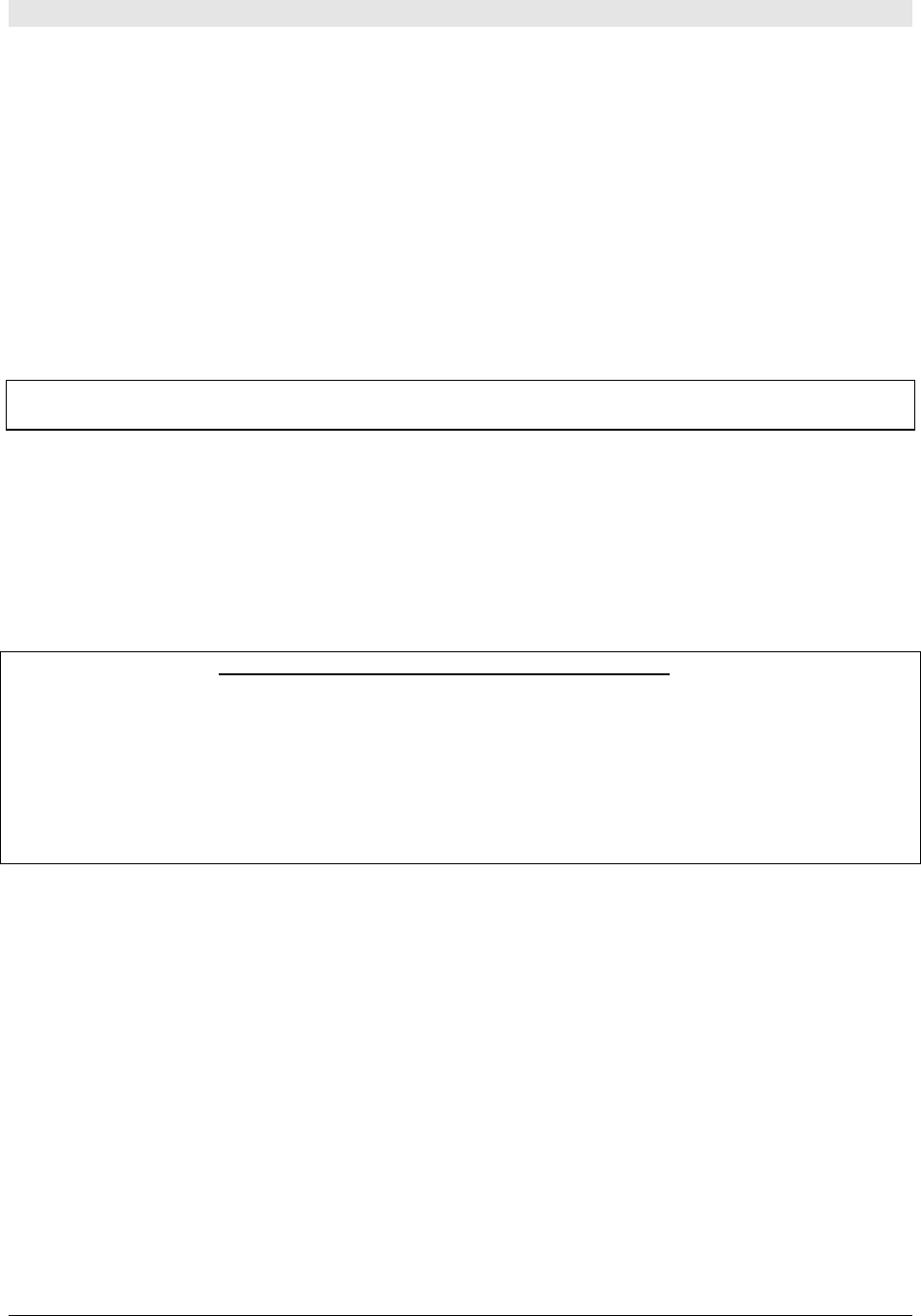
Scope Xlite USA Version
XLITEUSAECO Issue 1
6
Installation
The following procedure must be adhered to when installing the Xlite paging system. Ensure you have
taken into consideration all of the above information before selecting the location for your transmitter. If in
doubt, contact your dealer for further advice.
1 Remove the cover from the Xlite transmitter unit by undoing the two Pozi head screws located on
the front of the unit (see Diagram 1).
2 Carefully lift off the cover and set aside.
3 The transmitter should be fixed to a flat wall surface using suitable screws fitted through the holes
provided in the chassis plate. Hold the chassis up to the chosen location and with the aid of a
pencil mark the position of the mounting holes.
Warning: Do not use the chassis plate as a template for drilling the holes into the wall. Hammer drills
vibrating through the chassis may irreparably damage the quartz crystals on the printed circuit boards.
4 Place the Xlite transmitter over the mounting holes and secure the unit with suitable screws.
5 Connect the antenna to the unit via the BNC connector located at the top of the housing. If the
antenna is an external antenna, or an antenna which is separate from the transmitter unit itself,
ensure that the previous criteria covered under the section headed Location of the Hardware,
have been strictly adhered to (also see section headed Other Antennas).
SERIAL PORT (25 way D Type Plug)
PIN SIGNAL DIRECTION
02 TRANSMIT DATA (TX) OUT
03 RECEIVE DATA (RX) IN
04 REQUEST TO SEND (RTS) OUT
05 CLEAR TO SEND (CTS) IN
07 GROUND (GND)
19 +5V (100mA max) (for Scope peripherals)
20 DATA TERMINAL READY (DTR) OUT
As information passes only from the host equipment to the Xlite transcoder, you will only need to read the
DTR line which, if high at the port pin, shows that power is applied to the Xlite unit. The RTS line will be
high when the transcoder ‘s ready to receive data. The Xlite RTS line should be connected to the host
CTS line to facilitate correct handshaking. Prior to connecting the data cable, thoroughly check the
system pin connections as shown above.
6 Replace the cover and re-fit the two retaining screws.
7 Power can be provided by way of an AC adapter (part no PTPS12110V, not supplied), or from the
host system (if suitably equipped) with a12-13.8 volts dc supply, @ 300 mA max. With power
applied, the red LED on the front cover of the unit should be lit.
8 The system is now ready to accept calls from the host terminal. When a call is transmitted, the
green LED on the front cover of the unit will light momentarily.
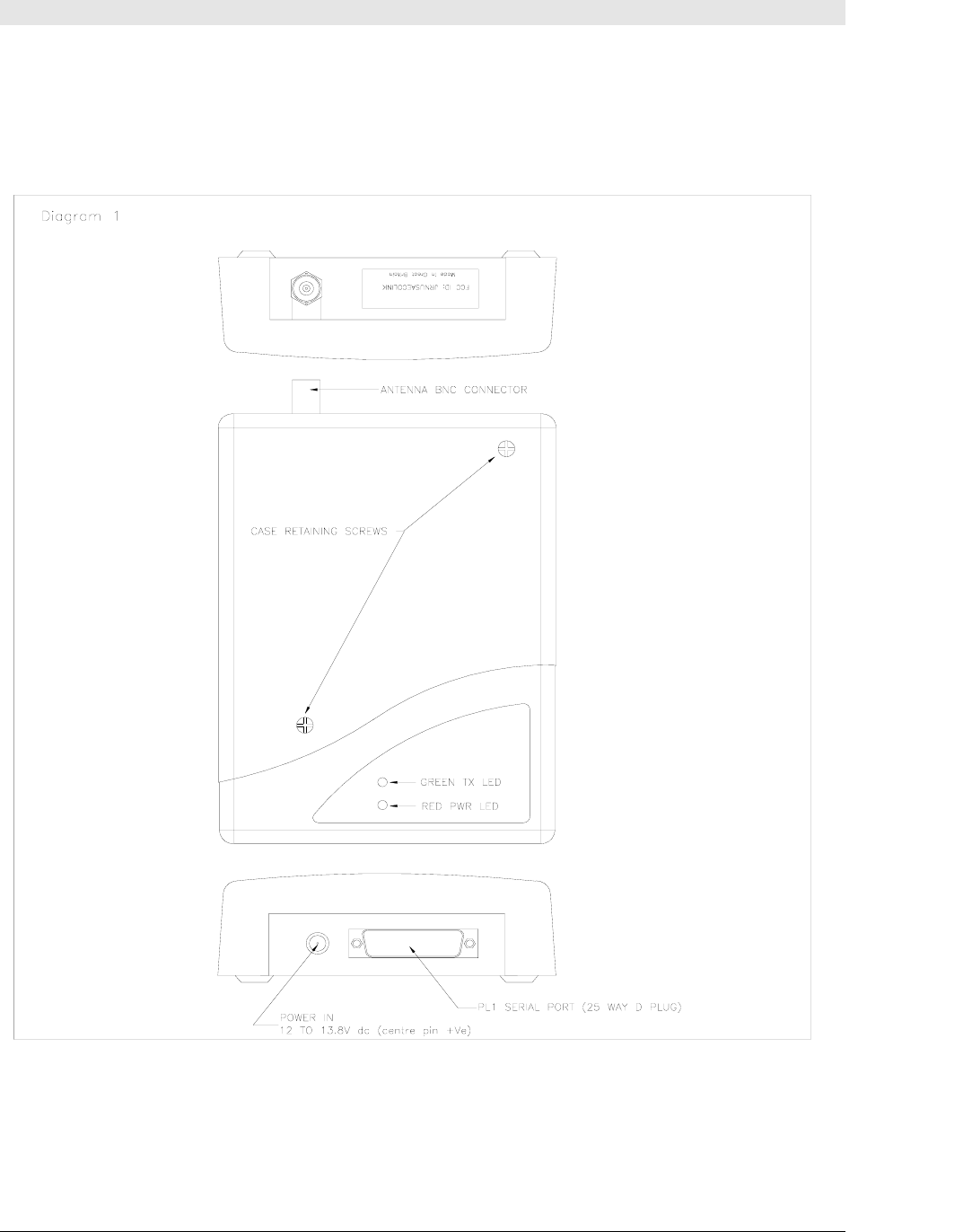
Scope Xlite USA Version
XLITEUSAECO Issue 1
7
X Lite
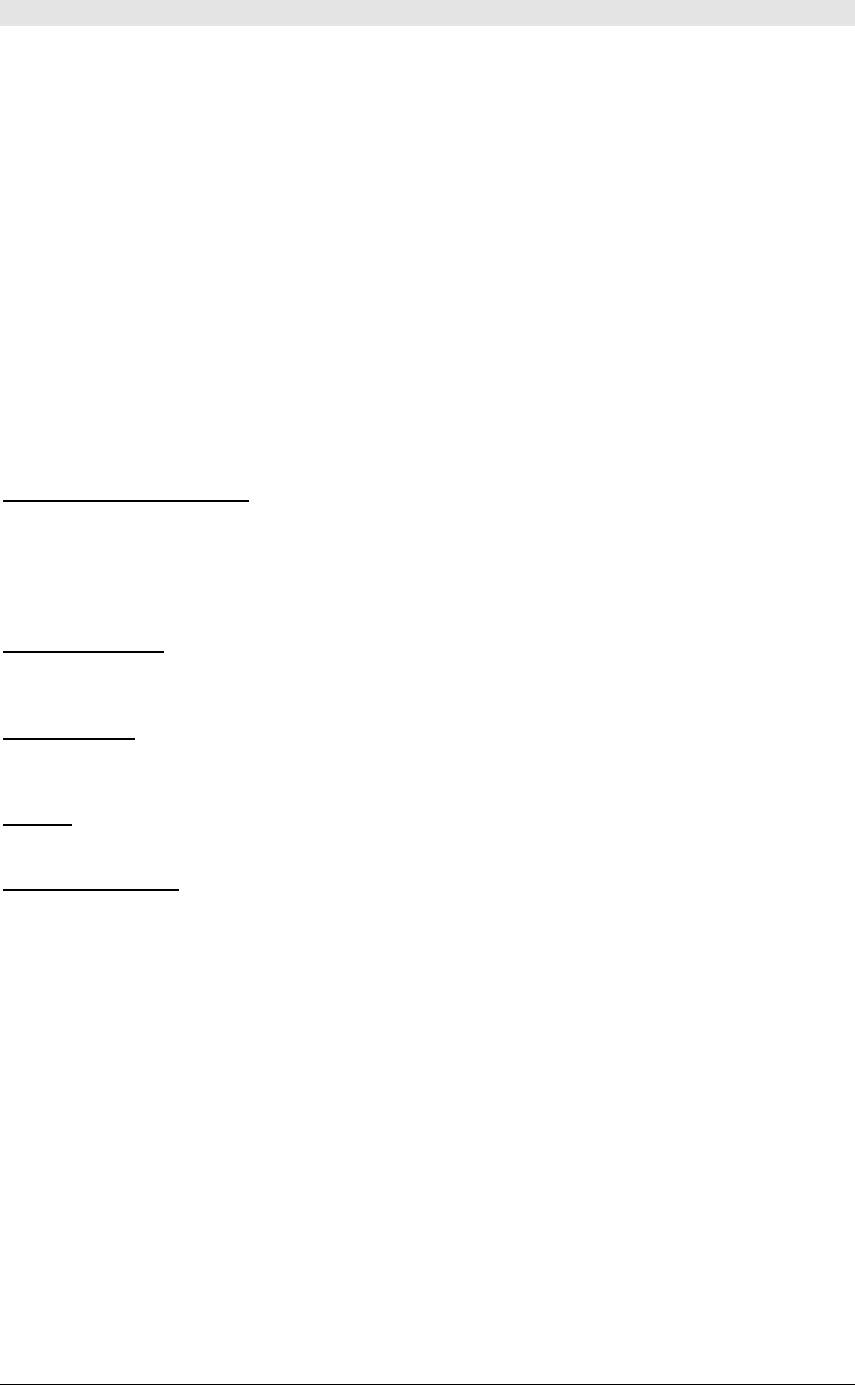
Scope Xlite USA Version
XLITEUSAECO Issue 1
8
Section 2: System Operation
The RS232 protocol must be set as N,8,1 (*exception: when sending numeric messages @9600 baud
using Pagelink Pro, this must be set to N,8,2). The default serial baud rate is 9600 baud.
The default transmission (pager) baud rate is 512.
Maximum message length: 117 characters (Scope protocol), 120 characters (Comp2).
Scope protocol requires all 7 digits of the capcode + beep type.
Maximum logical pager number when using Comp2 is 9999. Minimum base ID is 0000008 and
maximum is 1920008.
All input commands have to be in upper case.
The serial baud rate, paging baud rate, paging format (alphanumeric or numeric) and base ID can be
changed using the following commands:-
Serial baud rate commands
XB1 Carriage Return = 1200 Baud
XB2 Carriage Return = 2400 Baud
XB4 Carriage Return = 4800 Baud
XB9 Carriage Return = 9600 Baud
Paging Baud Rate
XS Carriage Return = 512 Baud
XF Carriage Return = 1200 Baud
Paging Format
XTA Carriage Return = Alphanumeric
XTN Carriage Return = Numeric
Base ID
XIxxxxxxx Carriage Return. Example, XI0100000 carriage return will set the base ID to 0100000.
Transmitter Testing
XA Carriage Return will enable the transmitter with a modulation of 600Hz.
Please note, when using our Scope protocol if the paging baud rate character “N” or “F” is used then
the Xlite will default to that paging baud until power is removed. After power is reapplied it will return
to the baud rate set by the “XS” or “XF” commands.
Sending data using Scope or Comp2 protocol (see Technical Section, Calling Pagers) will invoke
transmitted messages to the relevant pagers. Note: if using Pagelink Pro, sequential message feature
cannot be used with the X-Lite transmitter.

Scope Xlite USA Version
XLITEUSAECO Issue 1
9
Problems and Fault Finding.
1 Check and re-check the data cable connections. This, together with an incorrect signaling
format, result in more faults than any other problem.
2 Check that the communications configuration and protocol on the host matches the system
(e.g. 8,N,1, Scope). Note: programmable comms baud rate is from 1200 to 9600 baud.
3 Check that the pagers are at least 3 meters from the transmitter and aerial. Under certain
conditions it is possible to flood the pager receivers and corrupt the data received.
4 Check that the pagers have the battery installed with the correct polarity and are correctly
powered up.
5 Check that the red power LED on the front of the transcoder is lit. If not, check the power
hook up with the aid of a suitable meter.
6 Check that the green LED lights for the duration of the transmission. If not, go back to the
data cabling and re-check the signal format.
7 Check that the aerial is correctly installed.
8 Check the pagers are set to the correct baud rate and are resident on the correct radio
frequency.
*****************************************************

Scope Xlite USA Version
XLITEUSAECO Issue 1
10
Other Antennas
The range and performance of this equipment can be improved by the addition of more efficient
antennas*. Aerial efficiency and choice of aerial location will have far more effect on range and
signaling integrity than deploying a power amplifier. These can be installed either inside or
outside the building and are connected to the transmitter with 50 OHM coaxial cable.
Glass mount antenna (UHFGM): for installation on the inside of a suitable window. This can boost
range, especially if it is required in one direction from the building.
The center fed half wave dipole, measuring approximately 12 inches from tip to tip, will provide
excellent all round local signaling. This can be mounted either inside or outside a building. Two
versions are available:
1) a light duty antenna suitable for sheltered environments/internal installation (LUHFDP).
2) a heavy duty stainless unit with optional mounting hardware for more arduous applications
(UHFDP).
Other antennas, including collinear, are available for external applications. Consult your dealer for
further details.
Pre-terminated coaxial feeder cables are available for 5, 10 or 15 meter requirements.
Note ! High frequencies can equate to high power losses. Always use quality cable. RG58 is only
acceptable on cable runs of up to 5 meters. We recommend RG213, or equivalent, on greater
lengths. If in doubt consult your dealer.
*subject to license conditions. Specifically, mounting height and Effective Radiated Power (ERP).
Consult your dealer before changing antenna type.
Service Information
If you experience a problem with your equipment, please contact the distributor from whom it was
purchased. In any event, ensure you have the systems details at hand for reference purposes.
Record your system details here for quick reference:-
Date supplied____/____/____ Supplied by (dealer):____________________________
*Serial Number: ___ ___ ___ ___ ___ ___ ___
* 7 digit number located on the rear chassis plate of the Xlite unit (see Diagram 1)
Transmitter frequency __ __ __ . __ __ __MHz FCC ID No: JRNUSAECOLINK
System base ID number__________________
Serial port configuration ________________ (e.g. 8,N,1)
Serial port protocol____________________ (e.g. SCOPE, COMP1, COMP2, TAP)
Alphanumeric Pager Ranges: from______________ to ______________
For information on individual pager types, refer to the appropriate pager manual

Scope Xlite USA Version
XLITEUSAECO Issue 1
11
System Specification
Voltage Input: 12 to 13.8 volts
Power Consumption: 300 mA max
System Power Consumption: less than 50mA standby, 300mA (transmit)
Transmitter:
Frequency Range: 450-470 MHz
Channel Spacing: 12.5 or 25 KHz
TX Baud Rate: 512 (default) or 1200
FCC ID No: JRNUSAECOLINK
Serial Port:
Baud Rate: 1200 to 9600 (default)
Port configuration: 8,N,1 (default)
Protocol: Scope (default)
General:
Footprint (mm): 185 (H) x 140 (W) x 42 (D)
*dependent on system configuration
excluding aerial
Scope’s policy is one of continuous development and specifications are subject to change without notice

Scope Xlite USA Version
XLITEUSAECO Issue 1
12
Section 3: Technical Information
This section provides a more in depth understanding of how messages are formatted for serial
communication from a host. It provides useful information for hook up to serial data devices or for
programming pagers and understanding the system configuration. Depending upon the issue of
software resident in the controller the message length will be a maximum of either 512 or 2000
characters. Check before quoting or ordering.
Calling Pagers
Pagers all use 7 digit numeric addresses that enable the system to support thousands of pagers
without identity clashes. Most pagers will support multiple addresses (sometimes referred to as
CAP codes, RIC’s or identities ID’s). This enables the pager not only to respond to its own unique
address but also to respond to group or global addresses.
These real 7 digit numeric codes are often substituted for shorter logical numbers which are
easier to remember and more meaningful. It also allows, in most cases logical pager numbers to
be generated to match the customer’s internal telephone extension numbers. Under these
conditions the host or specialty program within the transcoder will perform an algorithm on the
data string received to convert the simpler logical number back into a real 7digit number for
transmission.
The real 7 digit pager numbers are always spaced 8 digits apart. This is a function of the
POCSAG standard, it allows for eight frames in which the pager identity can reside. Scope uses
frame 0 as a default for most systems as this provides for the fastest pager response when
called.
To avoid system identity clashes, transcoders are provided with a base number within the range
of 1000 to 1,999,000. If for example a base address of 0100,000 is applied to a transcoder, the
first real pager number will 0100,008 followed by 0100,016 and so on.
Logical pager numbers are normally used on systems fitted with the telephone interface and
those which are interfaced to personal computers. The algorithm would perform the following
function:-
For example take the logical pager number of 123
The logical pager number 123 will be multiplied by 8 and then added to the base number to
provide the 7digit real number
Logical No Base No Real No
123 x 8 = 984 + 0100,000 = 0100984
Pager address 1, or ID 1 is normally reserved as the personal identity for that specific pager.
Other addresses, of which there can be 6 or more, can be tagged to specific pagers to form
selected groups. Address 2 or ID 2 could, for example, be used for all pagers to formulate a
global call.
Address codes can be divided between full addresses and sub addresses. Full addresses can
allow four different bleep types, A, B, C or D, whereas sub-addresses will only accommodate a
fixed bleep type. A status line of information will normally be provided on the pager screen which
will highlight the type of bleep sent together with other status information.

Scope Xlite USA Version
XLITEUSAECO Issue 1
13
Numeric Pagers
Numeric pagers will normally allow for up to 20 digits to be transmitted within a message.
Typically the screen will display the first 12 digits and scroll the remainder when prompted by the
user. Characters allowed include 0-9, space, -(hyphen), ‘U’ (letter U for ‘U’rgent), [,] open/close
square brackets, (open square brackets can also be used to identify the letter ‘C’ for ‘C’ancel.
Alphanumeric Pagers
Alphanumeric pagers come in a wide variety of styles and formats. They will accept a full
alphabet in both upper and lower case apart from other ASCII characters in the range 32-122 as
per ISO 646. The screen displays may offer 1,2 or 4 lines of text and will scroll messages of
varying length depending upon their specification (refer to the specific pager manual)
*********************************************************************

Scope Xlite USA Version
XLITEUSAECO Issue 1
14
Appendix A
Industry Communications Protocols
This section deals with the serial data formats commonly used within the On-site Paging Industry.
Scope has its own proprietary protocol, but can for certain systems provide a number of other
industry-recognized protocols. Warning! Check the protocols available for any given unit before
quoting for a specific application. Maximum permissible message lengths will apply. Numeric will
always limit to 20 digits. Alphanumeric will depend upon the product in question or the software
issue employed. Check before quoting or ordering.
Scope Protocol
Numeric Pagers
Example serial message string transmitted from the host to the transceiver:-
N0012300A1234567890<CR>
The ‘N’ informs the transcoder that this message is destined for a Numeric pager. Any data not
preceded by this will be ignored. The maximum message length within the characters allowed for
the Numeric transmission format is 20.
Next follows the 7digit pager identity number. All seven digits must be used.
The letter following the identity is the beep type of which there are four valid characters, A, B, C
or D.
Next follows the message to be transmitted, which can include:
0-9, space, -(hyphen), ‘U’ (letter U for ‘U’rgent), [,] open/close square brackets, (open square
brackets can also be used to identify the letter ‘C’ for ‘C’ancel). The final character sent is
‘carriage return’ <CR>, which is not transmitted but represents the end of message marker.
On sending a message to the unit in the correct format the transcoder will immediately
recompose the string into the POCSAG format and transmit the same at the pre-programmed
baud rate. The time taken to transmit the message is dependent upon the pager baud rate and
the length of the message string.
Alphanumeric Pagers
Example serial message string:- A0012300A This is a message <CR>
The data format is exactly as for numeric pagers, except that the recognition character at the front
of the message is changed from an ‘N’ to an ‘A’ and the data can include the ISO 646 character
set (full alphabet including both upper and lower case). The maximum message length will be
from 512 to 2,000 characters depending on the software issue installed.
Transmission baud rate: in the above example, the default baud rate is sent.
To change the transmission baud rate in a message string, placing a letter “N” after the “A” will
alter it to 512 baud. Placing a letter “F” after the “A” will alter it to 1200 baud.
The default setting for transmission to pagers on Scope transmitters is 1200 baud.

Scope Xlite USA Version
XLITEUSAECO Issue 1
15
Appendix A
Comp 2 or People Finder Protocol
The system must be programmed with valid pager types or ranges. The system can be
configured as Numeric, Alphanumeric or mixed. In the case of mixed systems the ranges must be
defined at the time of ordering within the overall range 1 through 9,999. E.g. this could be ID 1 to
1000 reserved for numeric and 1001 to 9,999 for Alphanumeric. Remember that the range
selected must allow for Group Calls as well as individual pager ID’s. The reason for the range
requirement is due to the change in the transmitted data word format under the POCSAG
standard, coupled with the fact that the serial data provided by the host under this format does
not allow the transcoder to differentiate between numeric and alphanumeric data formats.
Example Numeric serial message string transmitted from the host to the transceiver:-
1234A<CR>1234567890U[-] <CR>
The data starts with a one to four digit number followed by a beep type, (A,B,C or D) and then a
‘carriage return’ <CR>. This is then followed by the message (20 digits max) and another
‘carriage return’ <CR>.
On sending a message to the unit in the correct format the transcoder will immediately
recompose the string into the POCSAG format and transmit the same at the pre-programmed
baud rate. The time taken to transmit the message is dependent upon the pager baud rate and
the length of the message string.
Example Alphanumeric serial message string:-
1234A<CR> This is a message <CR>
The sequence is exactly the same as for Numeric data except that the information transmitted
can include the ISO 646 character set (full alphabet including both upper and lower case).
Comp 2 can also provide message prioritization on certain Scope systems equipped with
message buffering. This utilizes the A,B,C,D beep type to set the level of priority. Certain Scope
products will also accept this format without the beep type included in the message string. This
will invoke a default beep type being inserted by the transcoder.
Comp 1 Protocol
This is a simplistic interface which accepts a serial data string from the host and adds a single
cap ID or address to the string enabling it to be transmitted to pagers globally.
Example Alphanumeric serial message string:-
This is a message <CR>
On receiving a valid message string the transcoder will immediately add the pre-programmed ID
and beep type, recompose it into the POCSAG format and transmit the same at the pre-
programmed baud rate. The time taken to transmit the message is dependent upon the pager
baud rate and the length of the message string.

Scope Xlite USA Version
XLITEUSAECO Issue 1
16
Appendix A
TAP - (T)elocator (A)lphanumeric (P)rotocol:
TAP is commonly used in the wide-area paging industry, generally between remote transmitting
stations via a modem. Its' advantage lies in the two-way nature of the communications link, and
using checksums, the ability to request retransmissions in the event that an error is detected by
the receiving station.
There are two optional parameters: the password and a sign-off text message, and either or
both of these can be included.
Scope TAP implementation adheres strictly to the Version 1.8 specification, and will allow both of
these parameters to be defined or left out. If a password is not programmed into the system, it will
not expect one, the same goes for the sign-off string, if the entry is blank it will not appear.
A typical TAP transaction is as follows:
1 The caller makes sure the receiving station is connected by requesting a response.
2 The receiving station responds with a request for the identity of the caller, in this case
the enquiry consists of the text string 'ID='.
3 The caller then sends a string to identify the protocol it intends to use, and a
password if this is required.
4 If the receiving station accepts the response and password it acknowledges the fact
and then requests the sender deliver the message it is holding for transmission.
5 The sender transmits the pager number and text message to deliver, and attaches a
checksum based on the contents of the data transmitted. (see example below).
6 The receiving station computes the checksum from the received data and if it
matches the appended checksum of the received data, acknowledges the fact or
requests a re-transmission of the data if this is not the case.
7 The sending station will then either request another message block is transmitted, or
indicate to the remote station that the transaction is complete.
8 Once all the data has been sent, and the sending station indicates this fact, the
receiving station will optionally send a sign-off message, and instruct the sender to
terminate the link. If no sign-off message is included, only the link termination
command is issued.
On a modem-connected link, this would be the point at which the line is dropped by both sides.
On a permanent link, the sender and receiving station return to their normal handshake
exchanges to verify the link, or cease communication until another transaction is required.
These steps are normally limited to a set number of attempts, due mainly to the requirement that
a telephone or modem link should not be maintained indefinitely. For this reason there are also
time constraints which specify how long to wait for a given response.
These 'retry' numbers and time limits are the other 'flexible' options in the TAP protocol. The
Scope system allows the installer to specify these values for themselves to suit the application to
which the protocol is applied.
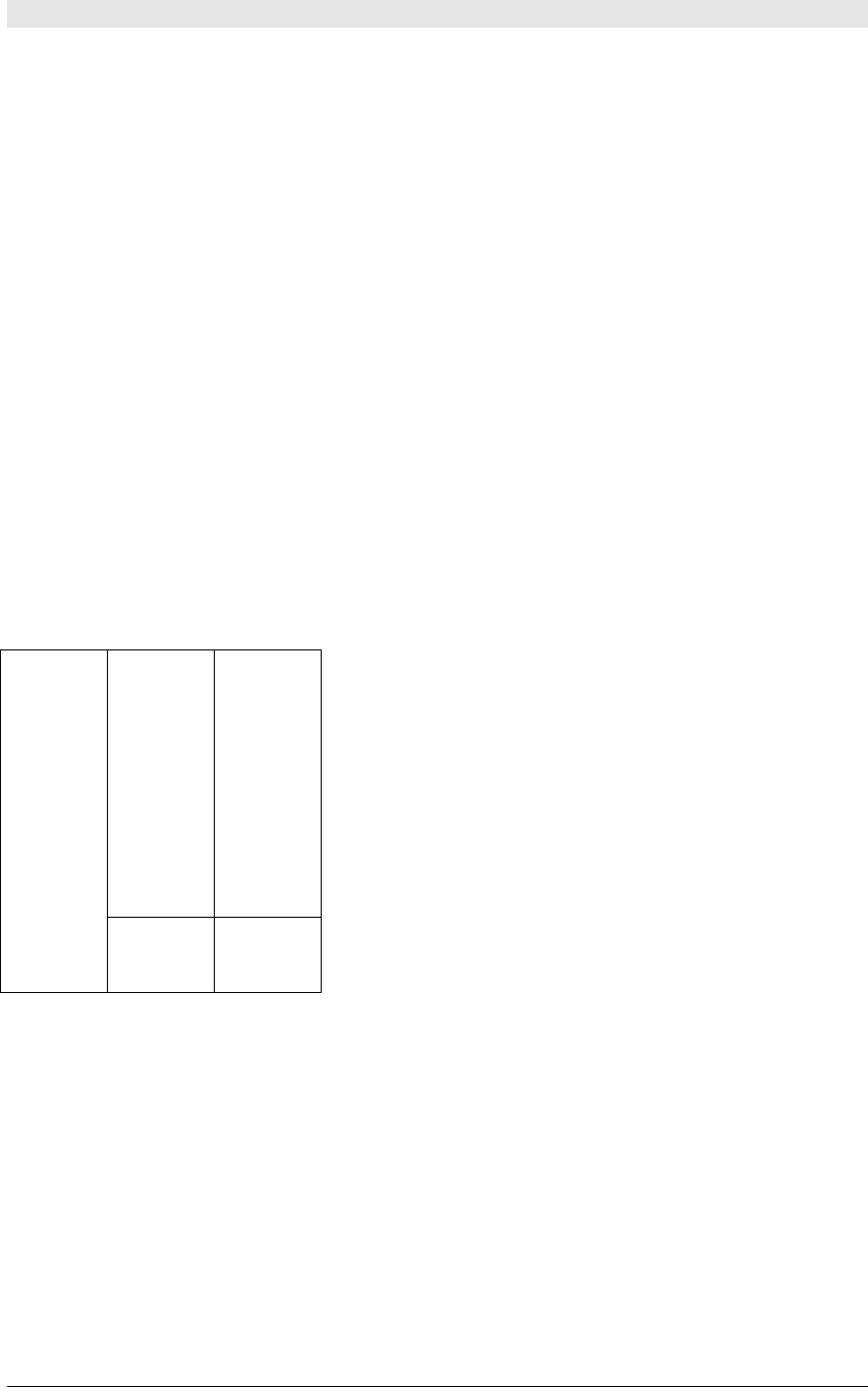
Scope Xlite USA Version
XLITEUSAECO Issue 1
17
Appendix A
Example of typical Command-Acknowledge Sequence:
CALLER RECEIVING STATION
<CR> every 1 second unit…..
ID=
<ESC>PG1<CR>
<ESC>[p<CR>
<STX>1<CR>TEST<CR><ETX>190<CR>
(“TEST” is the message) Processing-Please Wait<CR><ACK><CR>
(“190” is the Checksum)
+++,,,,,,,,,,ATHO<CR>
Carrier Drop
Example Checksum:
The following table shows an example of a complete block containing a correct checksum which
is : <STX>123<CR>ABC<CR><ETX>17;<CR>
Checksum = 17
*********************************************************************
000 *
011 *
011 *
011
000 *
100
100 *
100 *
000 *
000 *
0010 *
0001
0010 *
0011 *
1101 *
0001 *
0010 *
0011 *
1101 *
0011 *
STX *
1
2
3 *
CR *
A *
B *
C *
CR
ETX *
*
*
*
1 0111
1 7
1011
; *